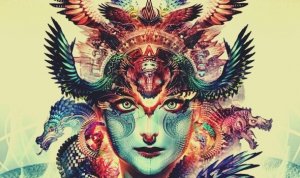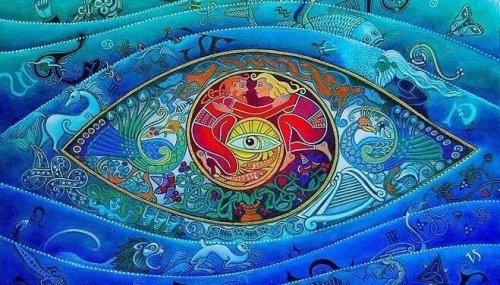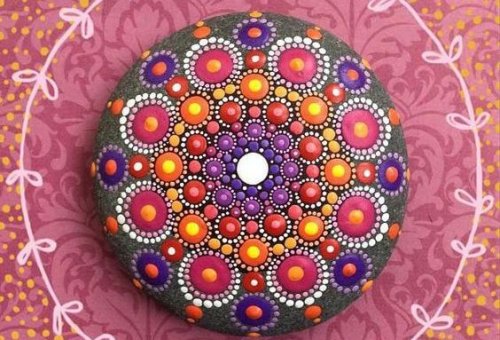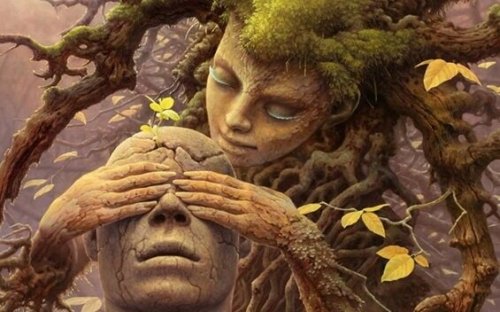Jungian Archetypes: Personalities of Our Unconscious


Written and verified by the psychologist Valeria Sabater
Jungian archetypes describe the personalities of our collective unconscious. Few authors have offered such a novel perspective of the unconscious, where one can transcend the physiological and the pathological in order to reveal the existence of certain inherited models. Or models of behavior that underlie one’s mind and that determine behavior and thoughts.
To understand what an archetype is, let’s think about what’s going on right now in the world of film: superheroes. Everyone has a personal favorite. They’re all somewhat complex characters and yet they align, in essence, to the same pattern and the same concept: good, evil, wisdom, lies…
Many of the characters symbolize the most classic Jungian archetypes and their personalities. The same ones that in turn are also ingrained in every one of us, governing our behavior and decisions.
“Your vision will become clear only when you can look into your own heart. Who looks outside, dreams; who looks inside, awakes.”
-Carl Jung-
Jungian Archetypes and Personalities
These personalities inhabit the collective unconscious, from generation to generation. Thus, humans didn’t wake up in this world as a “tabula rasa”, as philosopher John Locke and many others before him claimed. The collective unconscious that we all share, independently of one’s culture, will bring about the same drives, needs, and characteristics in a greater or lesser degree in each person.
On the contrary, an aspect that Carl Jung reminded us of is that, although we all have a “collective soul”, our responsibility and purpose is individuation. It’s an obligatory process to develop an individual conscience, to shape a psychic image of ourselves that’s strong, healthy and fulfilled.

The Personalities that Inhabit the Collective Unconscious
When Carl Jung started attending the University of Basel in 1895 to study natural sciences and medicine, he began to have a recurring dream. He saw himself fighting against a kind of dark and dense fog. He saw a tall black figure that was chasing him. Also, he saw a light in the palms of his hands, an energy that he didn’t know how to use.
Sometime later, he came to the conclusion that this entity was his “shadow”. The place that contained his repressed fears, the weight of his past, and many of his negative attitudes. The light in his hands represented his duty to illuminate those dark, convulsive areas.
Few authors and figures in the field of psychology had such a dream world. And few could understand its implicit language and use it to give meaning to human behavior.
In fact, one of his most illustrious theoretical heirs, Michael Fordham, explains in a study he published in a mental health magazine that Jungian archetypes and their personalities were a first attempt to define our human desire for self-realization.
Fordham defended the idea that only when you identify the archetypes inside you and unravel the messages they contain, you’ll promote your own progress. This step will free you from your shadows, fears, and anguish to rise as free and realized entities.
The Self
- Being is the “everything” of your psyche. It represents an amalgam where all your psychic forces are arranged, where the conscious and the unconscious become one. It’s your introverted extreme and also your extroverted one.
- Jung used to equate The Self with a mandala. It’s like a circle full of figures and movements that reflects everything we are, our entire psychic structure.

The Shadow
This archetype is the most relevant one. We talked about it above. It’s comprised of:
- The ‘Shadow’ contains the essence of your past, what you deny and repress, and what you neglect.
- Likewise, your deepest desires, fears, and negative thoughts are also embedded in it.
- It’s common for it to arise in dreams in the form of terrifying figures, snakes, or wild animals that chase you.
Far from fearing this figure, you have to understand something very simple: it’s part of who you are. The shadow harbors that side of yourself that you haven’t worked on and that wants you to be enlightened with awareness and courage. Confronting your shadow and bringing it to the light is an act of maturity.
The Anima and the Animus
The Anima denotes femininity and its complement, the Animus, symbolizes masculinity. What does this archetype mean? For Carl Jung, each one of us, regardless of our gender, has both feminine and masculine forces. Thus, men have feminine energy that’s asleep and often repressed. And the same goes for women.
Therefore, if you could impulse your opposite, complementary energies, you could benefit (according to Jung) from the stereotypical virtues of each gender, such as intuition, strength, sense of protection, courage, etc.
The Persona
The Persona is that public image you choose to show your community. This action or need can lead to a process of disintegration.
However, nobody has to pretend to be what they’re not. No one should have to hide behind a mask, hiding their true identity.
So, to reach the summit that is individuation, you must eliminate the archetype of The Persona from your psyche.
The Father
The archetype of the Father integrates a great number of psychic and social forces: it’s the law, discipline, authority, protection, love… It symbolizes an internal figure that acts as a teacher and that should help you reach your objectives.
Now, this archetype also contains a set of opposing forces. On one hand, there’s the positive father. The one who, far from vetoing us or punishing us, propels us with his energy and affection, giving us direction and discipline. On the other hand, there’s the father of the shadows. An enigmatic figure that’s characterized by self-centeredness, rigidity, and authoritarianism.
The archetype side you feed depends on you. Does The Father veto everything you do or promotes your growth?
The Mother
The archetype of The Mother is the one that can most nourish you. It symbolizes universal care, encouragement, and love. It’s the impulse that always favors your success. The one who encourages you in complicated moments by giving you its love and motivation.
Within this stream of Jungian archetypes, this figure is the ultimate divinity and bears many similarities with what Robert Graves explained in his book The White Goddess. It’s that myth and entity what recurrently appears in our culture and nature as the creator of all things.

Conclusion
To conclude, the archetypes indicated above are the most relevant within Carl Jung’s collective unconscious theory. Others are the Child, the Wise Old Man or the Sage, the Hero, the Trickster or the Villain, the Maiden, and the Hermaphrodite.
These archetypes are currently being used in the world of cybernetics and robotics. MIT engineers, such as Peter Senge, use Jung’s ideas to program artificial intelligence and thus provide future robots with various “personalities”.
This text is provided for informational purposes only and does not replace consultation with a professional. If in doubt, consult your specialist.








